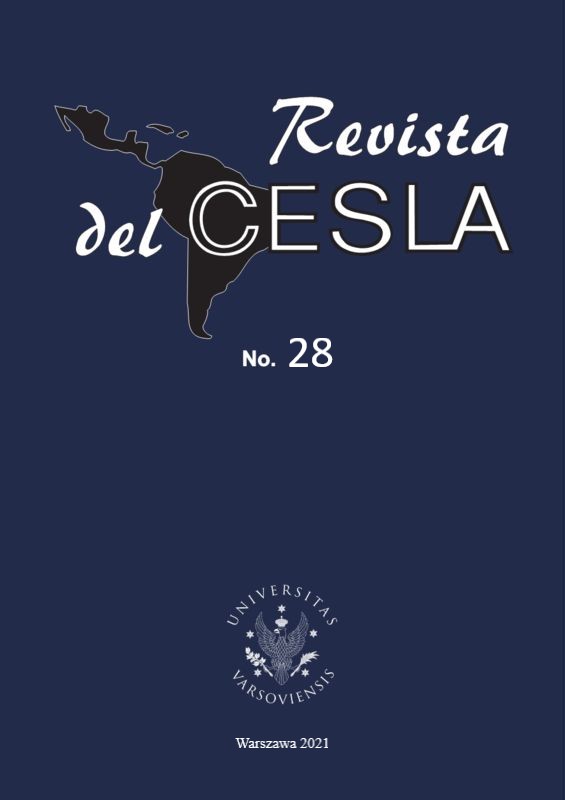Civil resistance against military dictatorships: People power in Bolivia
Palavras-chave:
civil resistance, nonviolent action, military dictatorships, re-democratization, people powerResumo
Civil resistance has had a crucial role in promoting social, political, and economic change throughout the world. During the period of dictatorships in South America, civil resistance through the use of nonviolent methods was implemented by Las Madres de la Plaza de Mayo (Mothers of the Plaza de Mayo) to address human rights violations, which eventually led to campaigns to demand democracy in Argentina. The military dictatorship of Pinochet in Chile also fell to the nonviolent campaigns and people power movements. Bolivia presents another case on the effectiveness of civil resistance against not only military dictatorships but also to demand the comeback of democracy. This article examines how civil resistance was implemented in Bolivia during the period of military dictatorships from 1964 to 1982. Once in power, the military dictatorships began to target workers and their union leaders, student organizations and leftist politicians driving them underground and into exile. State violence was used to repress opposition groups from all sectors and even the press. Security forces to include paramilitary groups were behind a series of kidnappings, tortures and killing of activists. To curb the state violence, union workers, miners, indigenous/campesino group, political leaders, and university students began a series of coordinated nonviolent methods, such as hunger strikes, road blockades, mass protests and marches. This article describes the benefits and outcomes of civil resistance showing how these nonviolent techniques and strategies were used to fight against military dictatorships and led the country back onto the path of re-democratization.
Referências
Alexander, R. J. (2005). A history of organized labor in Bolivia. Praeger.
Antezana Ergueta, L. (1994). Las grandes masacres y levantamientos indígenas en la historia de Bolivia (1850-1975). Juventud.
Carter, A. (2012). People power and political change: Key issues and concepts. Routledge Press. https://doi.org/10.4324/9780203181102
Cockburn, A., & St. Clair, J. (1999). Whiteout: The CIA, drugs and the press. Verso.
De Mesa, J., Gisbert, T., & Mesa Gisbert, C. D. (2003). Historia de Bolivia. Gisbert.
Delgado González, T. (1984). 100 años de lucha obrera en Bolivia. ISLA.
Della Porta, D. (2002). Comparative politics and social movements. In B. Klandermans and S. Staggenborg (Eds.), Methods of social movement research (pp. 286–313). University of Minnesota Press.
Dunkerley, J. (1984). Rebellion in the veins: Political struggle in Bolivia, 1952-1982. Verso.
Galeano, E. (1971). Las venas abiertas de América Latina. La Casa de las Americas.
García Linera, Á., Chávez León, M., & Costas Monje. P. (2004). Sociología de los movimientos sociales en Bolivia: Estructura de movilización, repertorios culturales y acción política. Plural.
Guevara, E. (“Che”). (1994). The Bolivian diary of Ernesto Che Guevara. Pathfinder Press.
Hahn, D. R. (1992). The divided word of the Bolivian Andes: A structural view of domination and resistance. Crane Russak.
Klaiber, J. (1998). The church, dictatorships and democracy in Latin America. Wipf & Stock.
Klein, H. S. (2003). A concise history of Bolivia. Cambridge University.
Kohl, B., Farthing, L., & Muruchi, F. (2011). From the mines to the street: A Bolivian activist’s life. University of Texas Press. https://doi.org/10.7560/723962
Ladman, J. R. (1982). The Failure to Redemocratize. In J. R. Ladman (Ed.), Modern-day Bolivia: Legacy of the revolution and the prospects for the future (pp. 345–370). Center for Latin American Studies, Arizona State University.
Lavaud, J. P. (1986). Los campesinos frente al Estado. In F. Calderón & J. Dadler (Eds.), Bolivia: La fuerza historica del campesinado (pp. 277–312). CERES.
Lehman, K. D. (1999). Bolivia and the United States: A limited partnership. University of Georgia Press.
Malloy J. M., & Gamarra, E. (1988). Revolution and reaction: Bolivia, 1964-1985. Transaction Book.
Martin, B. (2007). Justice ignited: The dynamics of backfire.: Rowman & Littlefield.
Mitchell, C. (1977). The legacy of populism in Bolivia: From MNR to military rule. Praeger.
Nash, J. (1979). We eat the mines and the mines eat us: Dependency and exploitation in Bolivian tin mines. Columbia University Press.
Payne, F. R. (2012). They make us dangerous (Bolivia 1964-1980). Xibris Corporation.
Quiroga Santa Cruz, M. (1973). El saqueo de Bolivia. Puerta del Sol.
Rivera Cusicanqui, S. (1984). Oprimidos pero no vencidos. Hisbol; CSUTCB.
Roberts, A. (2009). Introduction. In A. Roberts & T. Garton Ash (Eds.), Civil resistance and power politics: The experience of non-violent action from Gandhi to the present (pp. 1–24). Oxford University Press.
Roddick, J., & van Niekerk, N. (1989). The Bolivian labour movement. In J. Carriere, N. Haworth & J. Roddick (Eds.). The state, industrial relations and the labour movement in Latin America (Volume 1, pp. 128-177). St Martin’s Press. https://doi.org/10.1007/978-1-349-05905-8_5
Rojas Ramírez, P. (1989). Historia de levantamientos indígenas en Bolivia 1781-1985. Ideas Unidas.
Schock, K. (2005). Unarmed insurrections: People power movements in nondemocracies. University of Minnesota Press.
Schock, K. (2015). Civil resistance today. Polity Pres.
Sharp, G. (1990). Civilian-based defense: A post-military weapons system. Princeton University Press.
Tilly, C. (1984). Big structures, large processes, huge comparisons. Russell Sage Foundation
Viezzer, M. (1978). “Si me permiten hablar...”: Testimonio de Domitila, una mujer de las minas de Bolivia. Siglo XXI.
Vinthagen, S. (2015). A theory of nonviolent action: How civil resistance works. Zed Books. https://doi.org/10.5040/9781350251212
Zunes, S. (1994). Unarmed insurrections against authoritarian governments in the Third World: A new kinds of revolution. Third World Quarterly, 15(3), 403–426. https://doi.org/10.1080/01436599408420388










